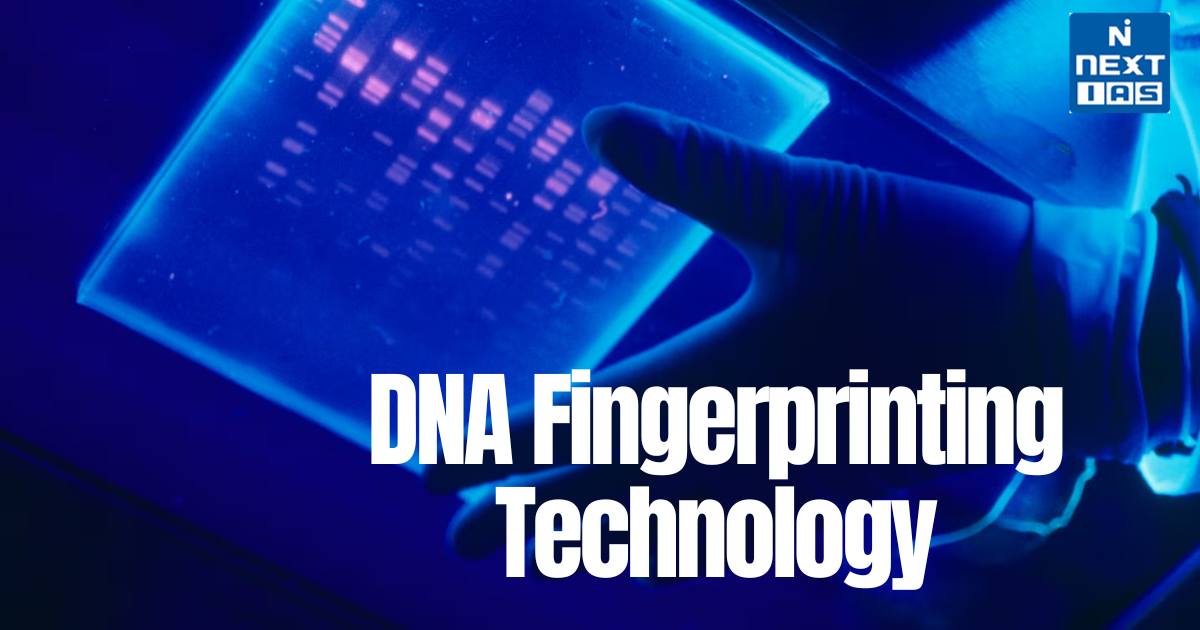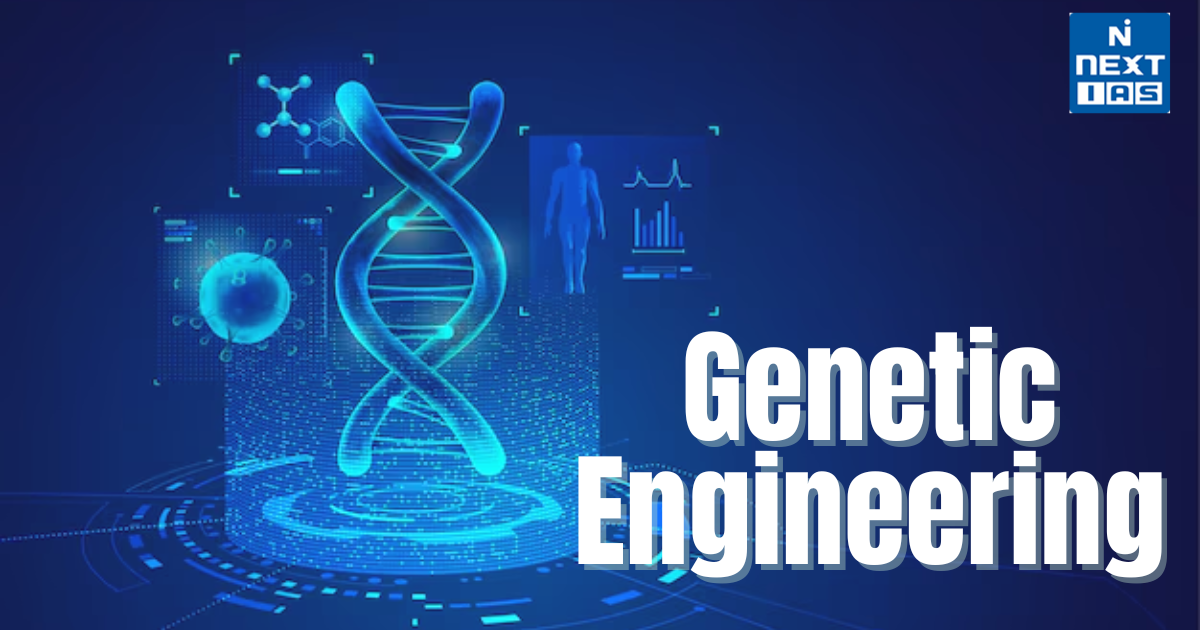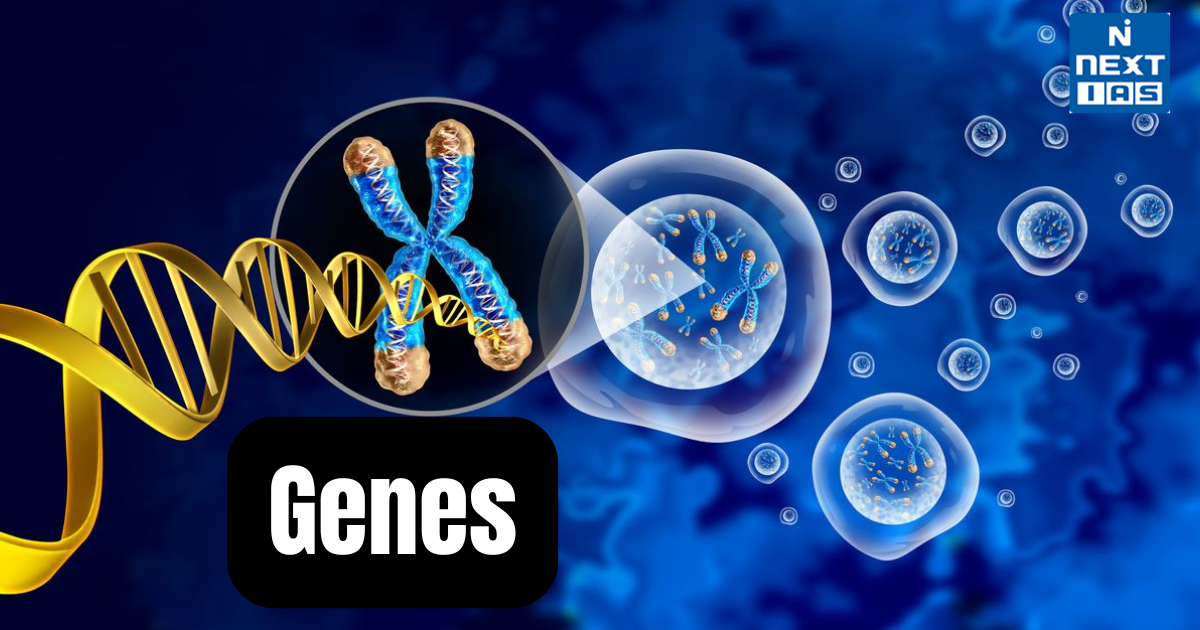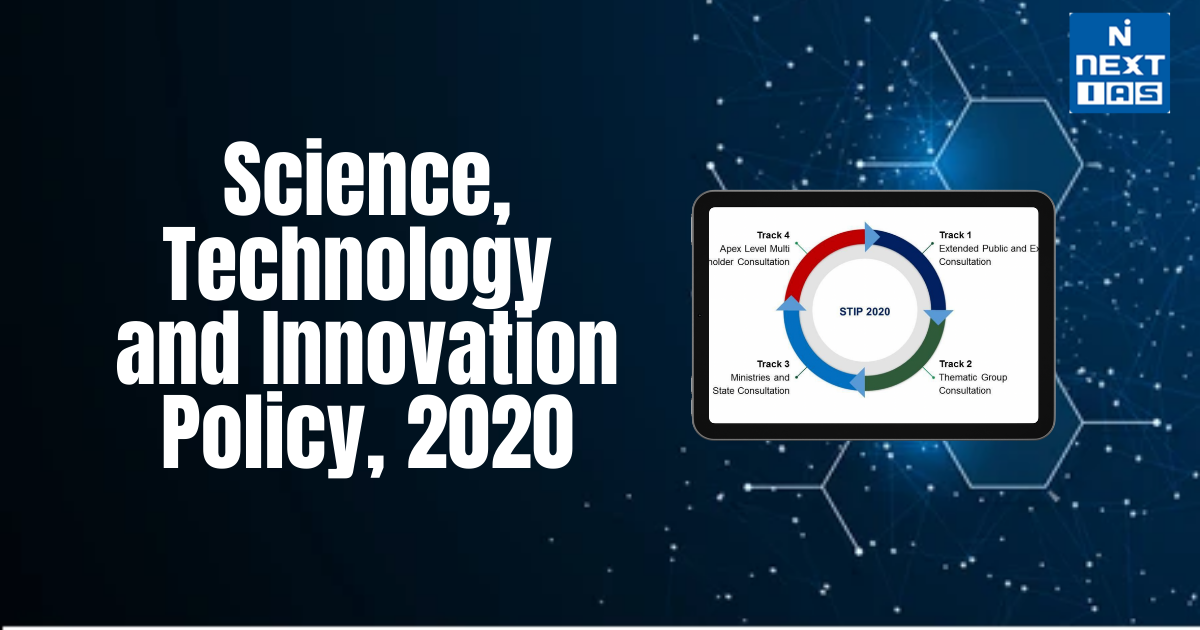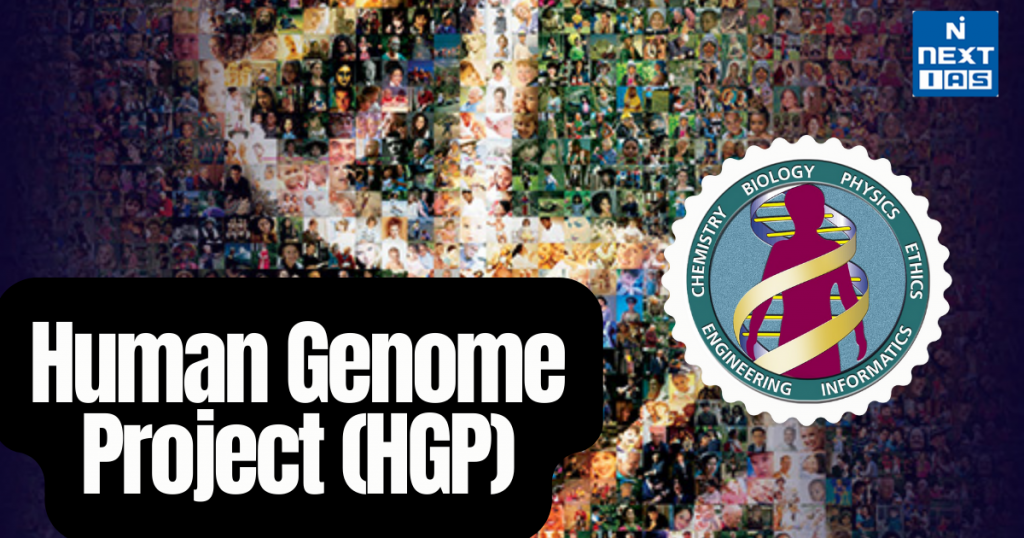
In the Civilization series, the Human Genome Project (HGP) was an international research program to map and sequence all genes in human DNA. The significant change that Modern Medicine underwent on being saddled with this project and thereafter, Genetics, and Human biology, together stand in the way of efficient development of disease prevention and treatment methods. This article attempts to look into the goals, objectives, methods, and applications of the Human Genome Project.
About Human Genome Project
- The Human Genome Project (HGP) was an international scientific research project devoted to determining the complete sequence of the nucleotide bases that constitute human DNA and all the genes it contains.
- It is still considered the world’s largest joint biological project.
- Starting very early in 1984, the idea was first proposed by the US government, although planning for the project did not commence until 1990. It was launched formally in 1990 and considered complete in 2003.
Goals of Human Genome Project
The goals of Human Genome Project can be seen as follows:
- The goals of the Human Genome Project are:
- To identify and locate both physically and functionally all the 20,000 to 25,000 genes in human DNA.
- To determine the order of the billion chemical base pairs constituting human DNA.
- To organize and store the information in databases.
- To develop tools and technology that improve our ability to analyze the data.
- Allow the private sector to have access to the information and technologies from this effort.
- Sequencing genomes of other organisms important in medical research such as mice and Drosophila.
- Finalizing the debates on ethical, legal and social issues.
Participating countries and funding agencies
- In 1990, both the DOE and the National Institute of Health were considered major funding agencies.
- In that year, they worked out an MoU to synchronize their plans and set up a clock for commencing the Project.
- Most government-sponsored sequencing was done in universities and research centers in the U.S., U.K., Japan, France, Germany, Canada, and China.
- A parallel initiative launched informally in 1998 existed outside government sponsorship by Corn Corp. or Cetera Genomics.
- It is publicly funded and is due in 1990, and the human genome project wanted to sequence the entire euchromatic human genome DNA within 15 years.
Pioneers in Human Genome Project
- The concept of sequencing a human genome was first proposed by Robert Glosheimer in 1983.
- Thus, the Congress of the United States passed the HGP Act under the Reagan Administration in 1988.
- In 1990 James Watson was appointed Director of the NIH Genome Program.
- In 1993, Francis Collins succeeded James Watson as the overall Project Head and Director of the National Institute of Environmental Health Sciences, which later became the National Human Genome Research Institute; he remained until the completion of the HGP in 2003.
- Determining the human genome first involves genome mapping or characterizing the chromosomes. This is called a genetic map.
- The next step is DNA sequencing, which determines the order of DNA bases on a chromosome. These are piratical maps.
Sequencing Strategies in Human Genome Project
To sequence DNA, it must first be amplified or increased in quantity. There are two types of DNA amplifications:
- Cloning: Cloning refers to making identical copies of a specific DNA fragment or gene. Molecular cloning is commonly used to isolate, replicate, and manipulate DNA sequences for research and biotechnology purposes.
- It involves inserting a DNA fragment into a vector (e.g., a plasmid) to create a recombinant DNA molecule, which can then be propagated in host cells.
- Polymerase Chain Reactions (PCR): Polymerase Chain Reaction (PCR) is a widely used molecular biology technique that amplifies a specific DNA sequence, generating millions of copies of a target DNA segment.
- PCR is essential in various fields, including genetics, genomics, forensics, and clinical diagnostics.
- Kary Mullis first developed it in the 1980s, and has since revolutionised molecular biology research.
Now that the DNA has been amplified, sequencing can begin. Sequencing techniques used in HGP are:
- Shotgun sequencing method: Shotgun sequencing is a DNA sequencing method used to determine the sequence of an entire genome, large DNA fragments, or even an entire DNA library.
- It is a powerful and widely used approach in genomics and was an essential technique employed during the Human Genome Project (HGP).
- Shotgun sequencing does not rely on prior knowledge of the DNA sequence.
- Instead, it involves breaking a long DNA molecule into numerous smaller fragments, sequencing those fragments, and then reassembling the sequence from the resulting shorter reads.
- Sianger sequencing method: Sianger sequencing is based on the principle of DNA replication in vitro using dideoxynucleotide triphosphates (ddNTPs).
- Unlike normal nucleotides (dNTPs) with a hydroxyl group (-OH) at the 3’ end of the deoxyribose sugar, ddNTPs lack this hydroxyl group.
- When a ddNTP is incorporated into a growing DNA strand during replication, it terminates further extension because the absence of the 3’ -OH group prevents the addition of the next nucleotide.
- After proper sequencing, mapping can be done using various data analytical tools.
Applications of Human Genome Project
Current or potentially involved applications of the Human Genome Project include entering more in-depth fields such as:
- Molecular medicine
- Diagnosing disease
- Predicting genetic predispositions to diseases earlier in life
- Drug Design
- Gene therapy with control systems for drugs
- Risk assessment
- Assessing health damage and related risks from radiation expose, possibly including low dose exposures.
- Assessing health damage and related risks due to exposing to mutagenic chemicals and carcinogenic toxins.
- Minimizing the occurrence of heritable mutations.
- Bioarchaeology, anthropology, evolution, and human migrations
- Investigate evolution through germline mutations in lineages.
- Explore migration of various population groups based on female genetic inheritance.
- Investigate mutations on the Y chromosome to trace the lineage and migration of males.
- Compare mutation evolution breakpoints with population ages and associated historical events.
- Forensic DNA
- Identify possible suspects whose DNA may match evidence at a particular crime scene
- Free persons who were wrongfully charged with crimes
- Identify vanishing and catastrophe victims
- Parentage and family relationships.
- Establish paternity and other family relationships
- Identify endangered and protected species as an aid to wildlife officials (could be used for prosecuting poachers)
- Detect bacteria and other organisms that may pollute air, water, soil, and food
- Match organ donors with recipients in transplant programs
- Determine pedigree for seed or livestock breed
- Authenticate consumables such as caviar and wine
Conclusion
In conclusion, the Human Genome Project has significantly shaped several scientific disciplines, increasing our understanding of human health and genetics. The knowledge acquired from the Human Genome Project continues to inspire research and innovation, and the forthcoming breakthroughs that will shape medicine and biology are remarkable.
Read our detailed article on Genetic disorders.
FAQs: Human Genome Project (HGP)
What are the main points of the Human Genome Project?
The Human Genome Project (HGP) mapped the entire human DNA sequence, identifying all genes and their functions. It advanced medical research, disease diagnosis, and personalized medicine. HGP improved biotechnology, forensic science, and evolutionary studies. Completed in 2003, it revolutionized genetics, enabling breakthroughs in gene therapy and biomedical innovations.
Who launched the Human Genome Project?
The Human Genome Project (HGP) was launched in 1990 by the U.S. Department of Energy (DOE) and the National Institutes of Health (NIH). It was an international collaboration involving researchers from the USA, UK, Japan, France, Germany, and China. The project aimed to map and sequence the entire human genome.
Who is the father of the human genome?
Gregor Mendel is considered the “father of genetics” for his foundational work on inheritance. However, in the context of the Human Genome, James Watson played a key role in advocating for the Human Genome Project (HGP), while Francis Collins led the project to its successful completion in 2003.
What is the 10000 Indian genome project?
The 10,000 Indian Genome Project aims to sequence the genomes of 10,000 individuals across India to study genetic diversity, disease susceptibility, and population-specific traits. Led by CSIR, it supports precision medicine, biotechnology, and healthcare advancements by providing insights into India’s vast genetic heritage for better diagnosis and treatment strategies.
Why is the human genome project important ?
The Human Genome Project (HGP) is crucial for understanding genetic diseases, enabling personalized medicine, and advancing biotechnology. It helps identify disease-causing genes, improves drug development, and enhances forensic science. HGP also provides insights into evolution and human ancestry, revolutionizing healthcare, genetics research, and biological sciences for global benefit.
What is the human genome project all about ?
The Human Genome Project (HGP) was an international research effort (1990–2003) to map and sequence all human DNA. It identified genes, their functions, and genetic variations. HGP revolutionized medicine, enabling disease diagnosis, gene therapy, and personalized treatments while advancing biotechnology, evolutionary studies, and forensic science for global scientific progress.
What are the advantages of the human genome project ?
The Human Genome Project (HGP) offers numerous advantages, including improved disease diagnosis, personalized medicine, and gene therapy advancements. It enhances drug development, forensic science, and evolutionary research. HGP also aids in understanding genetic disorders, enabling targeted treatments, while fostering biotechnology innovations for healthcare, agriculture, and environmental sustainability.
What is the human genome project?
The Human Genome Project (HGP) was an international research initiative (1990–2003) aimed at mapping and sequencing the entire human genome. It identified genes, genetic variations, and their functions, revolutionizing medicine, biotechnology, and genetics. HGP enabled breakthroughs in disease diagnosis, personalized medicine, gene therapy, and evolutionary research.
Why is the human genome project called a mega project ?
The Human Genome Project (HGP) is called a mega project due to its large-scale international collaboration, vast funding, and advanced technology. It involved sequencing 3 billion DNA base pairs, requiring global scientific expertise. HGP revolutionized medicine, genetics, and biotechnology, making it one of the most ambitious biological projects ever undertaken.
